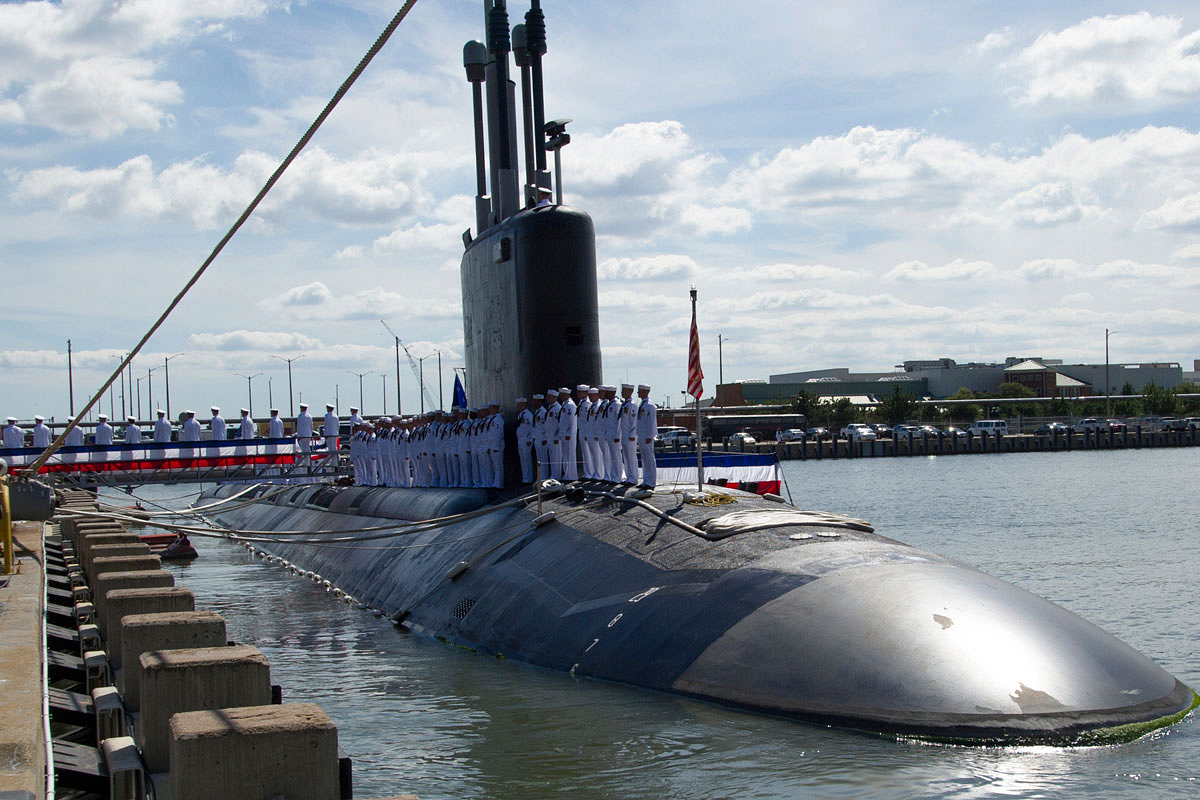World
Australia’s New Submarine Building Programme AUKUS May Have Run Into Trouble Before Even Hitting Waters
- Australia's AUKUS nuclear submarine programme faces challenges as former PM Turnbull warns of potential submarine shortage, leaving the navy dependent on US and UK subs despite significant investment.

File photo of United States Virginia class submarine which the Australian Navy will acquire in the 2030s.
Australia's new nuclear attack submarine programme — AUKUS — may have gotten into trouble before even starting.
AUKUS, short for Australia, United Kingdom, and United States, is a trilateral security partnership that entails Australia getting nuclear-powered conventional attack submarines (SSN) to replace its older Collins-class diesel-attack submarines (SSK).
This will involve the Australian Navy getting anywhere between three to five US Virginia-class SSNs, starting from 2033.
In the meantime, the development of the AUKUS submarine will continue with the British, until the first AUKUS submarine hits the waters in the 2040 timeframe.
More significantly, starting in 2027, four US Virginia-class SSNs and one UK Astute-class SSN will have a rotational deployment to the Australian naval base at HMAS Stirling under the Submarine Rotational Force-West (SRF-West).
The presence of US and UK submarines in the region will act as a bulwark against increased Chinese aggressiveness in the region.
This deal will also involve training Australian crews, both military and civilians, on handling equipment related to nuclear submarines.
However, according to former Australian prime minister Malcolm Turnbull, due to AUKUS, Australia may end up in a situation where its navy has to do without any submarines at all, fully dependent on the submarines of the US and UK based at HMAS Stirling, despite paying a significant sum of money to both the US and UK — $3 billion each — to strengthen their submarine manufacturing base, apart from the money being spent on upgrading HMAS Stirling.
Turnbull's argument hinges on the fact that the Australian Collins-class SSKs are nearing the end of their service life and are set to retire after 2026. With their retirement expected in the 2030 timeframe, the Australian Navy faces the prospect of being left without submarines.
However, one might question: what about the three to five Virginia-class SSNs planned for induction into the Australian Navy starting in 2033?
This is where the catch lies.
The Chinese are aggressively increasing their naval fleet. China already has the largest navy in terms of the number of warships.
The US is playing hard to play catch up, with the US submarine manufacturing industry consistently falling short of the requirement — 17 submarines, to be precise, according to Turnbull.
For the US Navy submarine fleet to reach the desired number, the US submarine manufacturing industry has to start making an average of 2.33 submarines every year — double from the 1.2 to 1.3 submarines currently, in the next four to five years.
It’s only if the US industry keeps manufacturing these submarines at the above rate that the Australian Navy may get its first Virginia by 2033.
This could leave the acquisition of Virginia SSNs at the mercy of US military needs, its politics, and industrial development. Lamenting at the situation, Turnbull says “Australia has no agency or leverage over any of these factors. So much for Australian sovereignty.”
The Australian Navy has, however, decided to conduct a mid-life upgrade of the Collins SSK to extend their life well into the 2030s, addressing the situation where Australia is left with no submarines at all and has to depend on protection from US or UK submarines.
Support Swarajya's 50 Ground Reports Project & Sponsor A Story
Every general election Swarajya does a 50 ground reports project.
Aimed only at serious readers and those who appreciate the nuances of political undercurrents, the project provides a sense of India's electoral landscape. As you know, these reports are produced after considerable investment of travel, time and effort on the ground.
This time too we've kicked off the project in style and have covered over 30 constituencies already. If you're someone who appreciates such work and have enjoyed our coverage please consider sponsoring a ground report for just Rs 2999 to Rs 19,999 - it goes a long way in helping us produce more quality reportage.
You can also back this project by becoming a subscriber for as little as Rs 999 - so do click on this links and choose a plan that suits you and back us.
Click below to contribute.
Latest